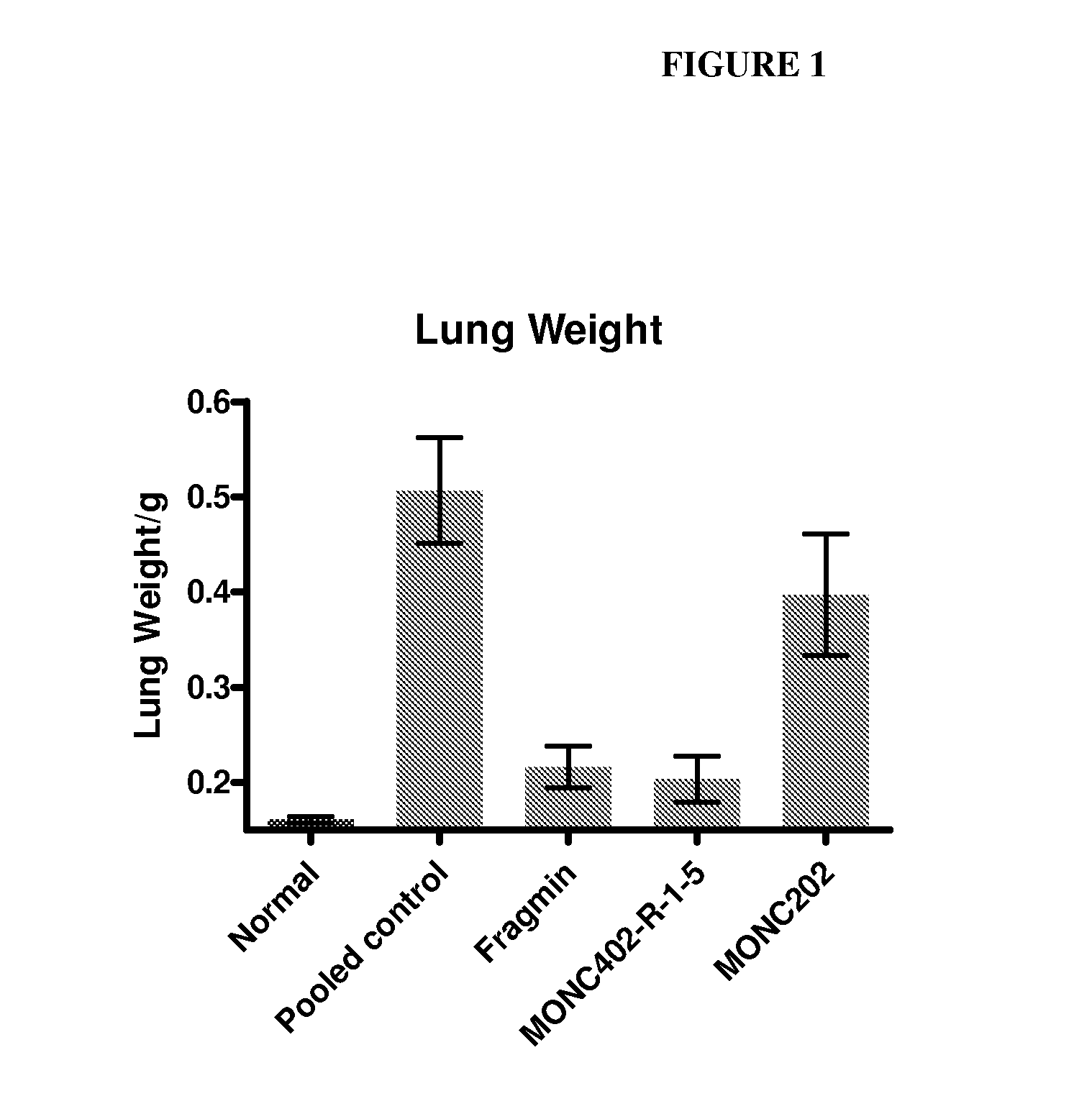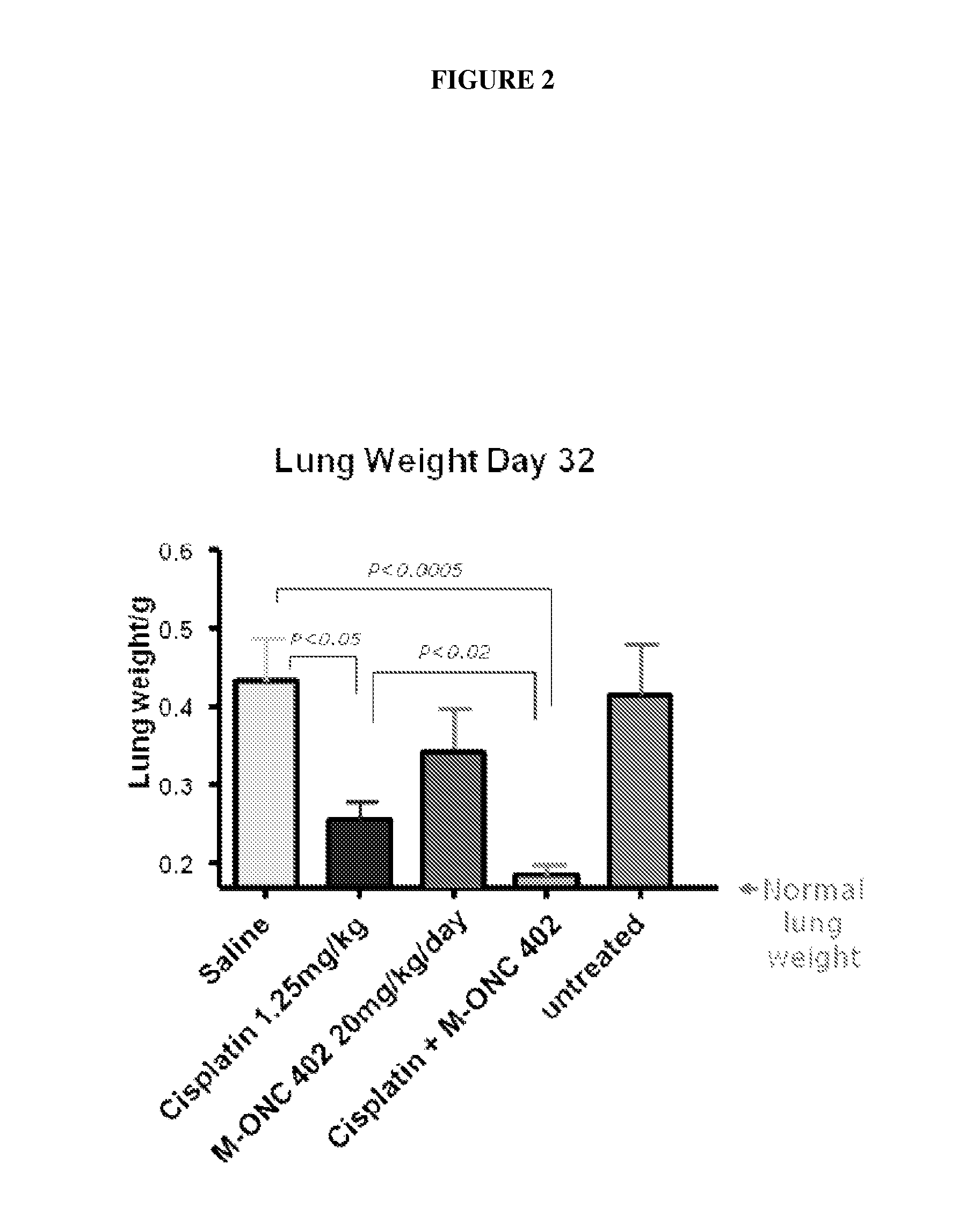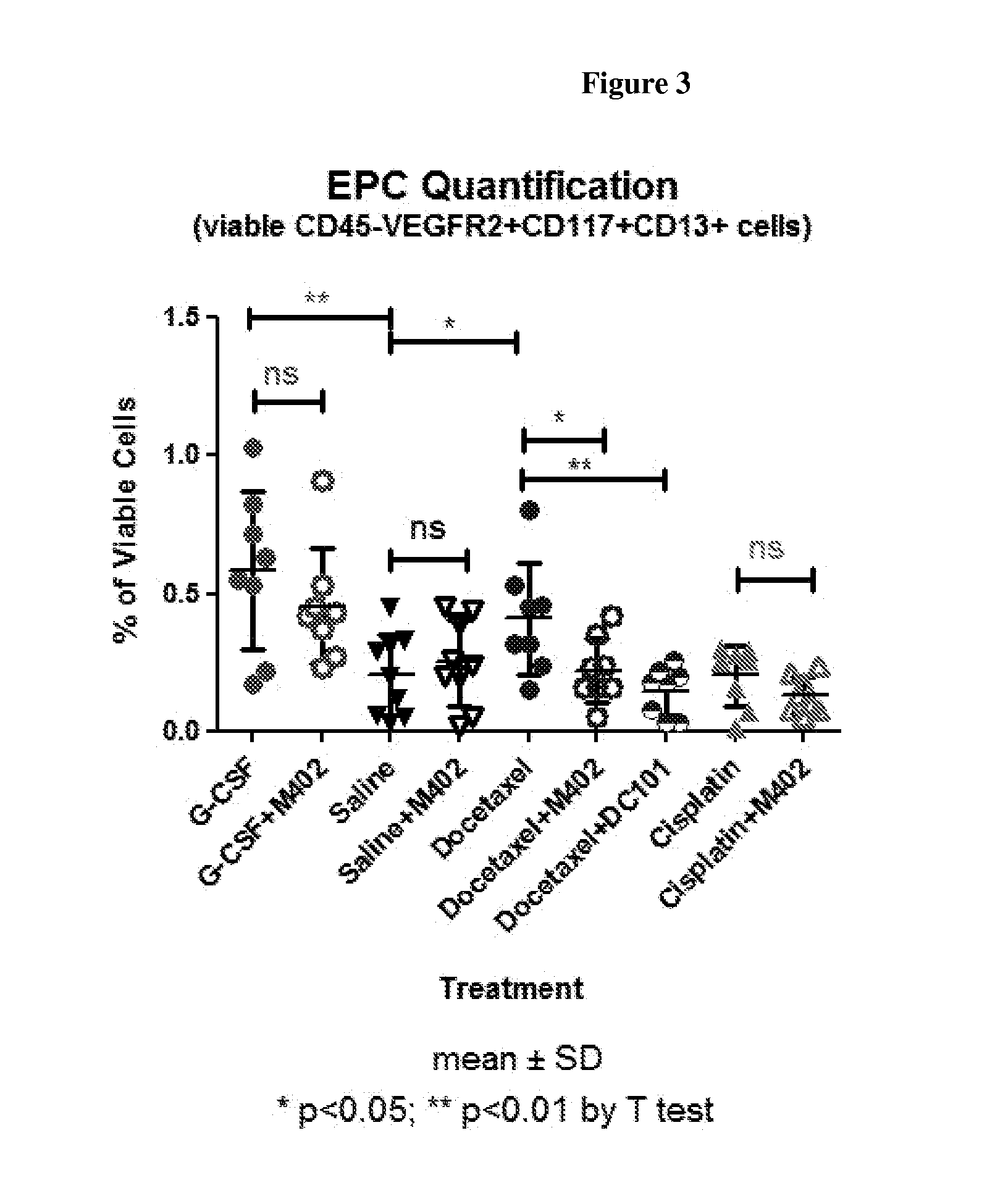Polysaccharide compositions and methods of use for the treatment and prevention of disorders associated with progenitor cell mobilization
a technology of progenitor cells and polysaccharide compositions, which is applied in the direction of drug compositions, peptide/protein ingredients, antibody medical ingredients, etc., can solve the problems that heparin is difficult to predict, and achieve the effects of reducing, reducing, reducing, or preventing an existing unwanted condition
- Summary
- Abstract
- Description
- Claims
- Application Information
AI Technical Summary
Benefits of technology
Problems solved by technology
Method used
Image
Examples
example 1
Preparation of a Polysaccharide Preparation
[0225]This example describes the production of a polysaccharide preparation described herein.
[0226]Overview: Glycol Split low molecular weight heparin alcohol (GS-LMWH-CH2—OH) was generated from unfractionated heparin (UFH) by controlled nitrous acid depolymerization followed by oxidative glycol-splitting and subsequent reduction to an alcohol. In the first step, UFH was depolymerized to obtain depolymerized heparin (DPH-CHO) having an anhydromannose moiety at the reducing end of the polysaccharide. This was followed by Step 11 oxidative cleavage of the 2,3-diols present in the depolymerized heparin with sodium periodate to generate ring opened glycol split residues along the heparin chain (GS-DPH-CHO). The Step III involved a reduction step, wherein the aldehydic moieties are converted to alcohols using sodium borohydride to generate Glycol Split low molecular weight heparin alcohol.
Method Overview:
[0227]The following paragraphs describe t...
example 2
Preparation of a Polysaccharide Preparation
[0249]Unfractionated Heparin is dissolved in 10-fold volume of de-ionized water equilibrated at room temperature. The pH of this solution is adjusted to pH 3.1, and sodium nitrite (0.03 M) is added. This reaction solution is allowed to stir for several hours following which the pH is neutralized prior to addition of sodium chloride (same amount as starting UFH material). After complete dissolution of salt, at least 2 volumes of methanol are added to this solution with constant stiffing. The precipitate obtained is aged at about room temperature for about 1 hour. This precipitate is then filtered and dried to obtain DPH in 80-85% typical yield.
Periodate Oxidation:
[0250]The aldehyde obtained in Step I is dissolved in about 10 volumes of water equilibrated at 5° C. To this solution is added an equal volume of cooled NaIO4 solution (0.1 M) and the reaction mixture is allowed to stir for 16 hours. On completion, the reaction is ...
example 3
Anti-Metastatic Properties of Polysaccharide Preparations
[0258]This example shows that the polysaccharide preparations have anti-cancer and anti-metastatic activity in multiple models of metastasis.
[0259]Model A: Murine Melanoma Experimental Metastasis (B16F10 iv) Model
[0260]A polysaccharide preparation produced as described in Example 1 (herein referred to as “MONC402”) showed anti-metastasis activity in a murine melanoma experimental metastasis model.
[0261]Female C57BL / 6 mice (9-10 weeks old) were treated once with a single dose (10 mg / kg) of MONC402, dalteparin / Fragmin® (a LMWH which has been reported to decrease metastasis), or MONC 202 (negative control, N-desulfated polysaccharide) immediately before i.v. injection of 2×105 B16F10 cells. Mice were sacrificed on day 21 and tumor burden was calculated as lung weight—normal lung weight. As shown in FIG. 1, MONC402 significantly inhibited B16F10 colonization of the lung relative to a pooled (untreated) control.
[0262]Model B: Colon...
PUM
| Property | Measurement | Unit |
|---|---|---|
| molecular weight | aaaaa | aaaaa |
| molecular weight | aaaaa | aaaaa |
| molecular weight | aaaaa | aaaaa |
Abstract
Description
Claims
Application Information
 Login to View More
Login to View More - R&D
- Intellectual Property
- Life Sciences
- Materials
- Tech Scout
- Unparalleled Data Quality
- Higher Quality Content
- 60% Fewer Hallucinations
Browse by: Latest US Patents, China's latest patents, Technical Efficacy Thesaurus, Application Domain, Technology Topic, Popular Technical Reports.
© 2025 PatSnap. All rights reserved.Legal|Privacy policy|Modern Slavery Act Transparency Statement|Sitemap|About US| Contact US: help@patsnap.com



